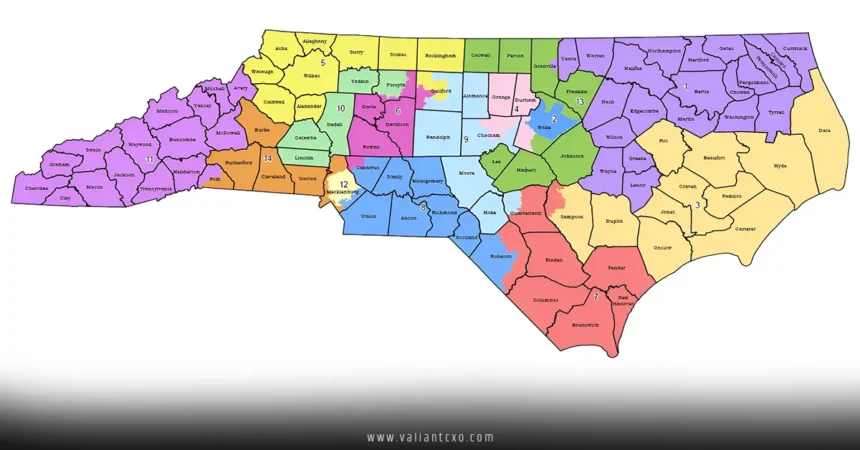What is gerrymandering, and why does it spark such fiery debates? Picture a board game where one player gets to redraw the rules to guarantee their win before the first move. That’s gerrymandering—a sly tactic where electoral district lines are manipulated to give one political party, group, or candidate an unfair edge. Rooted in the history of democracy, this practice shapes elections and impacts voters like you and me. In this deep dive, we’ll unpack what gerrymandering is, how it works, its origins, its consequences, and the fight to fix it—all in a clear, engaging, and beginner-friendly way.
What is Gerrymandering: A Simple Breakdown
At its heart, what is gerrymandering? It’s the act of redrawing electoral district boundaries to favor one side over another. Every ten years, after the U.S. Census, states redraw their district maps to reflect population shifts. This should be straightforward, but here’s the catch: those in power—often state legislatures or political operatives—can tweak these lines to stack the deck. By carving up neighborhoods, cities, or counties in strategic ways, they can ensure their party wins more seats than their voter support would naturally allow.
Think of it like slicing a cake so one person gets all the frosting while others are left with crumbs. The result? Elections that don’t always reflect the true will of the people. What is gerrymandering if not a power grab that can tilt the scales of democracy?
How Does Gerrymandering Work?
So, what is gerrymandering in action? It’s all about strategy, using two main tricks: packing and cracking. Packing jams as many of a rival party’s voters into a single district as possible, so they win that district by a landslide but have less influence elsewhere. Cracking splits those voters across multiple districts, diluting their power so they can’t win any.
Imagine a city with 60% Democratic voters and 40% Republican voters. In a fair system, district lines would reflect that split. But with gerrymandering, mapmakers could draw one district that’s 90% Democratic (packing) and others that lean Republican (cracking). Suddenly, Republicans might win more seats despite fewer votes. It’s like rigging a game show so the underdog always loses.
The History of Gerrymandering: Where Did It Start?
What is gerrymandering’s backstory? The term was born in 1812 when Massachusetts Governor Elbridge Gerry approved a bizarrely shaped district that resembled a salamander. A newspaper slapped “Gerry” and “salamander” together, and “gerrymandering” entered the lexicon. But the practice is older than the name. Politicians have been tinkering with maps since the early days of the American republic, trying to tilt elections in their favor.
Back then, gerrymandering was a clumsy art, relying on rough population estimates. Today, it’s a high-tech science. Mapmakers use powerful software and data—like voting records, demographics, and even social media trends—to draw lines with pinpoint accuracy. This evolution has made gerrymandering more precise and more divisive. Curious about its origins? The Smithsonian Magazine offers a great look at how this term came to be.
Why Is It Called Gerrymandering?
The name “gerrymandering” is a quirky mashup of Elbridge Gerry’s last name and “salamander,” thanks to that odd district shape. It’s a nod to how even 200 years ago, people saw these tactics as shady. What is gerrymandering if not a clever disguise for political scheming? The term now applies to any attempt to manipulate electoral maps, whether for partisan gain, racial bias, or protecting incumbents.
Types of Gerrymandering: More Than Just Party Games
What is gerrymandering beyond partisan tricks? It comes in several forms, each with its own motives and effects. Let’s break them down:
Partisan Gerrymandering
This is the classic type, where mapmakers tilt districts to favor one political party. Republicans might draw lines to lock in GOP strongholds, or Democrats might carve out safe blue seats. The goal is simple: maximize your party’s wins while sidelining the opposition. It’s like stacking the jury before a trial begins.
Racial Gerrymandering
What is gerrymandering when it targets race? Racial gerrymandering manipulates district lines to dilute or amplify the voting power of specific racial or ethnic groups. For example, mapmakers might pack minority voters into one district to limit their influence elsewhere or spread them out to weaken their voice entirely. This practice has faced fierce legal challenges, especially under the Voting Rights Act of 1965, which protects minority voters.
Incumbent-Protecting Gerrymandering
Sometimes, what is gerrymandering about if not preserving the status quo? Incumbent-protecting gerrymandering draws districts to ensure sitting politicians—regardless of party—stay in office. By creating “safe” districts with loyal voters, mapmakers shield their allies from challengers. It’s like building a moat around a castle to keep rivals out.
The Impact of Gerrymandering: Why It Matters to You
What is gerrymandering’s real-world impact? It’s not just a topic for political nerds—it reshapes democracy in ways that hit home. Here’s why you should care:
It Skews Representation
Gerrymandering can distort election results like a funhouse mirror. A party with fewer votes can win more seats, leaving voters feeling cheated. In 2012, for instance, Democrats won more votes in some states’ U.S. House races but ended up with fewer seats due to cleverly drawn maps. What is gerrymandering if not a way to bend the will of the people?
It Kills Competition
Safe districts mean politicians don’t have to hustle for votes. Why bother engaging voters if your seat is a lock? This breeds complacency, polarization, and lawmakers who cater to extremes rather than the middle. It’s like a sports team that knows the game is rigged—they stop playing hard.
It Erodes Trust
When voters discover what gerrymandering is and see it in action, they lose faith in the system. Why vote if the outcome feels predetermined? Low turnout and apathy set in, weakening democracy further. Gerrymandering doesn’t just steal seats; it steals confidence in fair elections.
Is Gerrymandering Legal? Navigating the Legal Maze
What is gerrymandering’s legal standing? It’s a gray area. The U.S. Constitution gives states the power to draw district lines, but the Supreme Court has set some boundaries. Racial gerrymandering is heavily restricted under the Voting Rights Act. Partisan gerrymandering, however, is trickier. In 2019, the Supreme Court ruled in Rucho v. Common Cause that federal courts can’t intervene in partisan gerrymandering cases, calling it a “political question.” States can still set their own rules, and some have banned extreme gerrymandering.
For a deeper dive into these legal battles, check out the Brennan Center for Justice, which tracks ongoing cases and reforms. It’s a complex fight, with courts, activists, and lawmakers all grappling over what’s fair.
How to Spot Gerrymandering: Red Flags to Watch
What is gerrymandering in practice, and how can you tell it’s happening? Look for these signs:
- Odd District Shapes: Districts that look like squiggles, salamanders, or puzzle pieces are often gerrymandered. Fair maps tend to be compact and follow natural boundaries like rivers or county lines.
- Unbalanced Results: If one party wins a disproportionate number of seats compared to their vote share, gerrymandering might be at play.
- Split Communities: Districts that carve up neighborhoods or cities for no clear reason can signal manipulation.
Want to analyze maps yourself? Tools like PlanScore let you check district fairness, revealing how gerrymandering skews outcomes.
Fighting Gerrymandering: Can We Fix It?
What is gerrymandering’s solution? Reformers across the U.S. are pushing to make elections fairer. Here are some promising approaches:
Independent Redistricting Commissions
States like California, Michigan, and Arizona have handed mapmaking to independent commissions. These groups, free from partisan control, aim to draw neutral, transparent maps. It’s like hiring a referee who doesn’t cheer for either team.
Fair Mapping Algorithms
Technology caused this mess, but it can help clean it up. Algorithms can draw maps based on neutral criteria like population equality and geographic compactness. Think of it as letting a computer play fair instead of a politician playing dirty.
Legal and Voter Pushback
Grassroots groups and lawsuits are challenging gerrymandered maps. Organizations like Common Cause advocate for reform, while voters in states like Ohio have passed ballot measures to curb gerrymandering. It’s democracy fighting back, one vote at a time.
Gerrymandering Around the Globe
What is gerrymandering outside the U.S.? While the term is American, similar tactics appear in countries with electoral districts, like the UK or India. However, stronger oversight or different electoral systems often limit its impact. The U.S.’s hyper-partisan environment and state-level control make it a hotbed for gerrymandering drama.
Why Understanding Gerrymandering Matters to You
What is gerrymandering’s relevance to your life? Whether you’re a first-time voter or a political buff, it affects your voice. Gerrymandered districts can silence communities, skew policies, and entrench power. By grasping what gerrymandering is, you can spot unfair maps, support reform, and demand a system where every vote counts equally. It’s like learning the rules of a game so you can call out a cheater.
Conclusion: Reclaiming the Map
What is gerrymandering, if not a challenge to democracy’s core? It’s a tactic that twists electoral maps to favor the powerful, often undermining fair representation. From its quirky 1812 origins to today’s high-tech schemes, gerrymandering shapes who wins and who loses, with ripples through laws, policies, and public trust. But hope isn’t lost—independent commissions, fair algorithms, and voter activism are pushing back. By staying informed and engaged, you can help ensure elections reflect the true will of the people. Next time you vote, think about the lines on the map. Your voice deserves to be heard, loud and clear.
FAQs About Gerrymandering
1. What is gerrymandering, and is it illegal?
What is gerrymandering? It’s the manipulation of electoral district lines to favor one party or group. While racial gerrymandering is heavily restricted under U.S. law, partisan gerrymandering is often legal, though some states have rules to limit it.
2. How can I tell if my district is gerrymandered?
Look for oddly shaped districts, split communities, or election results that don’t match voter turnout. Tools like PlanScore can help analyze whether your district’s map is fair.
3. What is gerrymandering’s impact on elections?
Gerrymandering distorts representation, reduces competition, and erodes voter trust. It can let a party win more seats than their vote share would justify, skewing democracy.
4. Are there states that don’t allow gerrymandering?
Yes! States like California, Michigan, and Arizona use independent commissions to draw maps, reducing partisan bias. Others, like Iowa, prioritize neutral criteria like compactness.
5. Can technology fix gerrymandering?
Technology can help by creating fair, transparent maps with algorithms. However, it’s also used to gerrymander with precision, so oversight is key to ensuring fairness.
Click Here:valiantcxo.com


